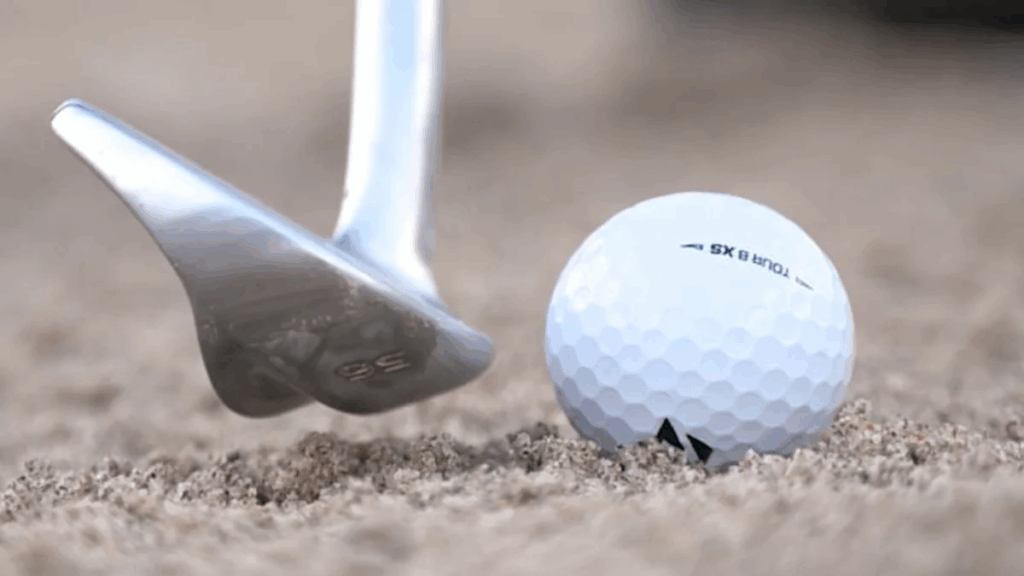For many beginner and high-handicap golfers, few shots feel as intimidating as the bunker shot. Standing over the ball with sand under your feet can create doubt, and instead of getting the ball safely onto the green, it’s easy to skull it across the green or leave it buried at your feet.
Here’s the good news. With the right setup, technique, and mindset, bunker shots can actually become one of the most reliable parts of your short game. Let’s get into it.
Change Your Mindset
The first step is reframing how you think about bunker shots. Unlike most golf shots, you’re not trying to make direct contact with the ball. Instead, you want the club to strike the sand a couple of inches behind the ball and use that sand to “splash” the ball onto the green.
This is why many professionals actually see bunker shots as easier than rough or tight lies. The sand gives you room for error. As long as you enter the sand in the right place, the ball will come out.
Setup Basics for Success
A proper bunker setup does half the work for you. Go through this checklist when preparing to hit a bunker shot. It may improve your success quicker than you’d think.
- Open the clubface: Before you grip the club, rotate the face slightly open. This adds loft and exposes the bounce of the wedge, helping it glide through the sand instead of digging.
- Grip normally: After opening the face, take your normal grip. If you grip first and then open, you have a higher likelihood of manipulating the face at impact.
- Wide stance: Place your feet shoulder-width apart or slightly wider for stability. Don’t be afraid to dig in a bit to improve your balance.
- Ball position: Play the ball slightly forward of center in your stance. This encourages a shallower strike into the sand.
- Weight forward: Keep about 60% of your weight on your lead foot and hold it there throughout the swing.
This setup gives you the foundation for a clean, splashy bunker shot.
Think Splash, Not Strike

The bunker swing is not about perfect ball-first contact, it’s about moving sand. Here are a few keys to keep in mind the next time you find yourself on the beach.
- Sand first, then ball: Aim to hit the sand about 1–2 inches behind the ball.
- Accelerate through impact: Many golfers decelerate in fear of blasting the ball over the green, leaving the ball in the bunker. Keep the club moving all the way through.
- Use a full, relaxed swing: Don’t jab at the ball. Take a smooth, committed swing as if you’re tossing sand onto the green.
- Follow through: Let the club exit high, finishing the swing fully.
A simple thought to keep in mind is to imagine throwing a handful of sand onto the green. The ball will ride out with it.
Club Choice Matters

Most golfers use their sand wedge (usually 54°–56° with bounce) for greenside bunker shots. The bounce (extra curvature on the sole) keeps the club from digging. There are some scenarios, though, where more or less loft may be beneficial.
- More loft (58°–60° lob wedge): Useful for high, soft bunker shots when you don’t have much green to work with.
- Less loft (gap wedge or pitching wedge): Helpful when you need more roll across a longer green.
As a beginner, stick mostly with your sand wedge until you gain confidence. I have found more success with a 56 degree wedge through the years than trying to work with a 60 degree.
Common Mistakes to Avoid
- Ball too far back: Leads to digging and chunked shots.
- Square clubface: Encourages the leading edge to dig into the sand.
- Decelerating: Causes weak shots that don’t escape the bunker.
- Trying to lift the ball: Trust the loft, don’t scoop.
Practice Drills for Bunker Confidence
You don’t need to spend hours on end working on your sand game. A few targeted drills can build confidence and take your game to new heights.
- Line in the sand drill: Draw a line in the sand and practice swinging so the club enters just behind it. Once you can consistently hit the line, place a ball a couple inches ahead.
- Splash drill: Hit shots focusing only on throwing sand onto the green. Forget the ball. The sand will carry it out.
- One-hand swings: Take a few swings with just your lead hand. This trains you to let the club’s loft and bounce do the work instead of forcing the shot.
Course Strategy: Play Smart from Bunkers

Not every bunker shot needs to be fancy. For newer golfers, the main goal should be getting out in one. Aim for the safest target, often just the middle of the green, rather than attacking a tucked pin. Over time, as your technique improves, you can get more aggressive.
Final Thoughts
Bunker shots may seem intimidating, and for good reason. However, once you understand the technique, they can actually become one of the most forgiving shots in golf. Remember: open the face, aim for the sand, accelerate through, and trust the club to do its job.
The next time you step into a bunker, don’t panic. See it as a chance to splash your way onto the green with confidence.
